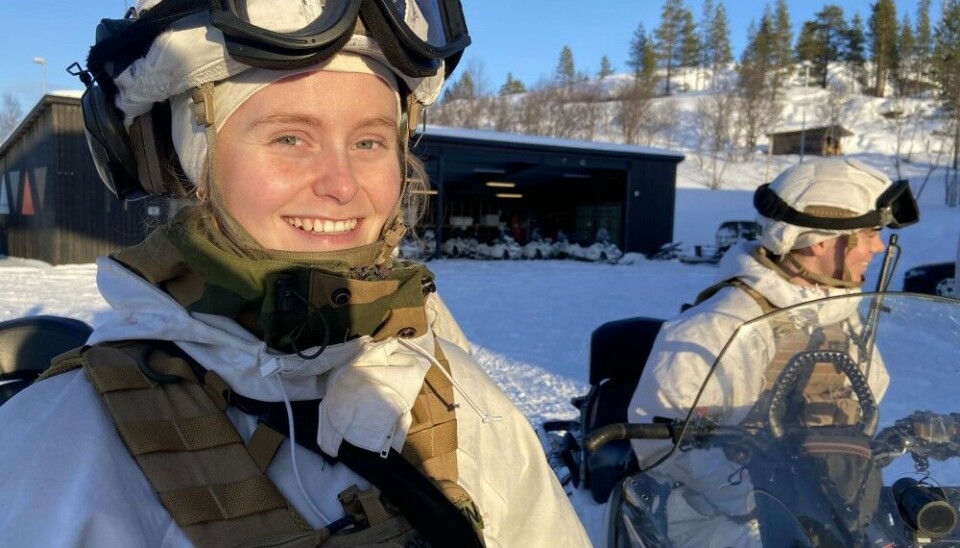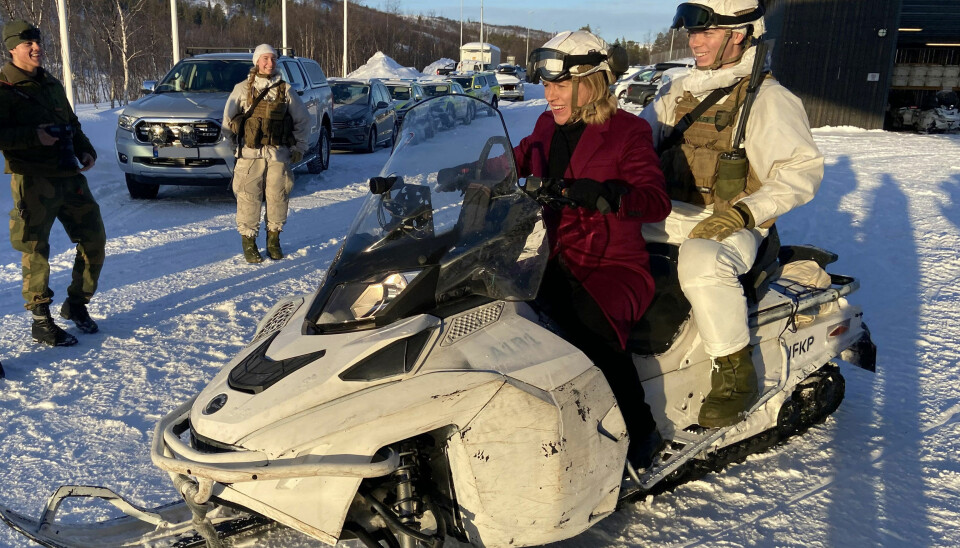Foreign minister Huitfeldt on snowmobile patrol along Russian border
Norway continues to keep border and ports open for Russia in the north. “We are cooperating with individual Russians,” foreign minister Anniken Huitfeldt says, but makes clear that it is impossible to meet government officials or politicians as long as the war on Ukraine goes on.
There are intensified police and military presence along Norway’s 198 kilometers long land border with Russia. Helicopters are in the air and guards are on snowmobiles. From watchtowers, the soldiers can see into the Kola Peninsula where training of Russian soldiers takes place before they are sent to the battlefields in Ukraine.
Anniken Huitfeldt says good control of the border is essential.
“You really feel the difference on the Russian side of the border so we are keeping very good situational awareness in this part of Norway and we have also increased the military presence. Right now the situation in this area is stable,” the minister says to the Barents Observer.
The Norwegian military in charge of patrolling the frontier in Jarfjord is based just a kilometer from the actual border line.

The foreign minister underlines that things might change. But for now, Norway is the only Schengen country that still keeps its checkpoint on the road from Russia open for Russian citizens traveling with tourist visas.
“There is a very limited number of people entering from Russia to Norway, so I wouldn’t say there is free access. The number of people coming to Norway from Russia has decreased, so I think we have good control in this area,” Huitfeldt says.
Police authorities in Finnmark in charge of immigration control saw a sharp increase in travelers from Russia after Putin announced partial mobilization of soldiers to the Ukraine war late last September. The increase could partly be explained by Finland shutting its border for Russians arriving with tourist visas. Like Poland and the Baltic States did a few months earlier.
In February, Storskog checkpoint counted some 5,500 border crossings, about the same as in the previous months.
Anniken Huitfeldt says it is important for her to keep the dialogue with ordinary Russian people at a time when there are no official political contacts between the two countries.
”We have to distinguish between Russia and the Russian people … This is very important for Norway, so we don’t have any contact with the government or politicians, that’s impossible in this situation. However, we are cooperating with individual Russians.”

The soldiers guarding the border, of which many are conscripts, are well aware that they are in charge of NATO’s northernmost direct frontier with one of Russia’s most heavily militarized areas, the Kola Peninsula, home to the fleet of ballistic missile submarines.
“The war doesn’t affect us that much up here. We are more on the edge, but it makes our job more exciting and important,” says Lena-Eline Mortensen.
Have you seen any activity on the Russian side of the border?
“I don’t really wanna talk about that, so no comment. We just watch the line,” Mortensen says with a smile.
Although thousands of kilometers away from the battlefields in Ukraine, she and her fellow soldiers know who they share border with.
“You always have to be on guard, you have to be ready, and we are.”















